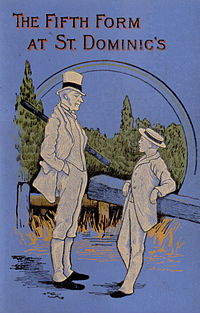
A nursery rhyme is a traditional poem or song for children in Britain and many other countries, but usage of the term dates only from the late 18th/early 19th century. The term Mother Goose rhymes is interchangeable with nursery rhymes.
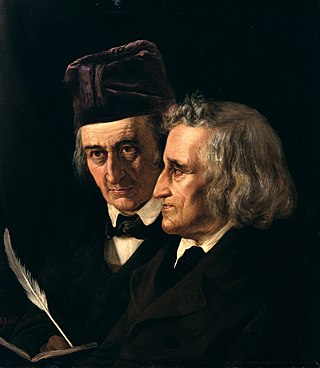
The Brothers Grimm, Jacob (1785–1863) and Wilhelm (1786–1859), were German academics, philologists, cultural researchers, lexicographers, and authors who together collected and published folklore. The brothers are among the best-known storytellers of folk tales, popularizing stories such as "Cinderella", "The Frog Prince", "Hansel and Gretel", "Little Red Riding Hood", "Rapunzel", "Rumpelstiltskin", "Sleeping Beauty", and "Snow White". Their first collection of folk tales, Children's and Household Tales, began publication in 1812.

A fairy tale is a short story that belongs to the folklore genre. Such stories typically feature magic, enchantments, and mythical or fanciful beings. In most cultures, there is no clear line separating myth from folk or fairy tale; all these together form the literature of preliterate societies. Fairy tales may be distinguished from other folk narratives such as legends and explicit moral tales, including beast fables. Prevalent elements include dwarfs, dragons, elves, fairies, giants, gnomes, goblins, griffins, mermaids, talking animals, trolls, unicorns, monsters, witches, wizards, and magic and enchantments.

Children's literature or juvenile literature includes stories, books, magazines, and poems that are created for children. Modern children's literature is classified in two different ways: genre or the intended age of the reader, from picture books for the very young to young adult fiction.
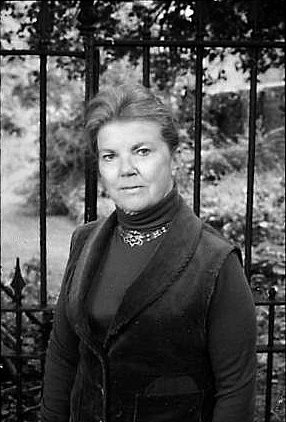
Joan Delano Aiken was an English writer specialising in supernatural fiction and children's alternative history novels. In 1999 she was awarded an MBE for her services to children's literature. For The Whispering Mountain, published by Jonathan Cape in 1968, she won the Guardian Children's Fiction Prize, a book award judged by a panel of British children's writers, and she was a commended runner-up for the Carnegie Medal from the Library Association, recognising the year's best children's book by a British writer. She won an Edgar Allan Poe Award (1972) for Night Fall.

Adventure fiction is a type of fiction that usually presents danger, or gives the reader a sense of excitement. Some adventure fiction also satisfies the literary definition of romance fiction.
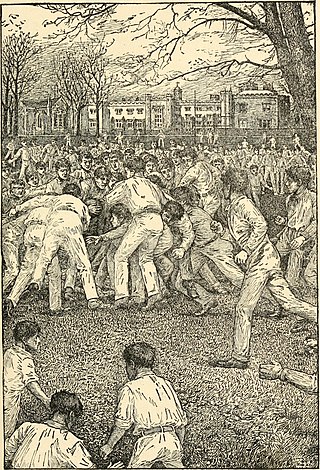
The school story is a fiction genre centring on older pre-adolescent and adolescent school life, at its most popular in the first half of the twentieth century. While examples do exist in other countries, it is most commonly set in English boarding schools and mostly written in girls' and boys' subgenres, reflecting the single-sex education typical until the 1950s. It focuses largely on friendship, honour and loyalty between pupils. Plots involving sports events, bullies, secrets, rivalry and bravery are often used to shape the school story.

Eric, or, Little by Little is a book by Frederic W. Farrar, first edition 1858. It was published by Adam & Charles Black, Edinburgh and London. The book deals with the descent into moral turpitude of a boy at a boarding school or English public school of that era.
Iona Margaret Balfour Opie, and Peter Mason Opie were an English married team of folklorists who applied modern techniques to understanding children's literature and play, in studies such as The Oxford Dictionary of Nursery Rhymes (1951) and The Lore and Language of Schoolchildren (1959). They were also noted anthologists, assembled large collections of children's literature, toys, and games and were regarded as world-famous authorities on children's lore and customs.

Talbot Baines Reed was an English writer of boys' fiction who established a genre of school stories that endured into the mid-20th century. Among his best-known work is The Fifth Form at St. Dominic's. He was a regular and prolific contributor to The Boy's Own Paper (B.O.P.), in which most of his fiction first appeared. Through his family's business, Reed became a prominent typefounder, and wrote a standard work on the subject: History of the Old English Letter Foundries.

Mrs. Overtheway's Remembrances (1869) is the first children's book published by author Juliana Horatia Ewing (1841–1885).

A Flat Iron for a Farthing (1872) is a book by Juliana Horatia Ewing (1842–1885) and consists of childhood reminiscences of the only child of a widowed father. It was one of the author's most popular books.

The Parent's Assistant is the first collection of children's stories by Maria Edgeworth, published by Joseph Johnson in 1796.

Evenings at Home, or The Juvenile Budget Opened (1792–1796) is a collection of six volumes of stories written by John Aikin and his sister Anna Laetitia Barbauld. It is an early example of children's literature. The late Victorian children's writer Mary Louisa Molesworth named it as one of the handful of books that was owned by every family in her childhood and read enthusiastically. In their introduction, the authors explain the title in these words:

"Puss in Boots" is a European fairy tale about an anthropomorphic cat who uses trickery and deceit to gain power, wealth, and the hand in marriage of a princess for his penniless and low-born master.
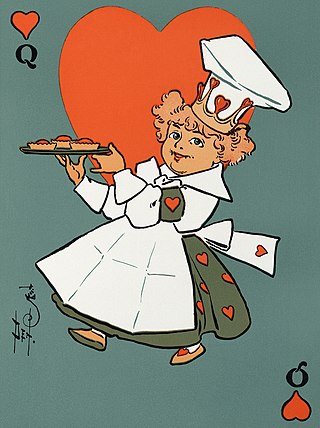
"The Queen of Hearts" is an English poem and nursery rhyme based on the characters found on playing cards, by an anonymous author, originally published with three lesser-known stanzas, "The King of Spades", "The King of Clubs", and "The Diamond King", in the British publication The European Magazine, vol. 1, no. 4, in April 1782. However, Iona and Peter Opie have argued that there is evidence to suggest that these other stanzas were later additions to an older poem.
Louise Frances Field was an Irish novelist and literary critic who wrote an early historical study of children's literature in England.
This page list the published work of Harry Collingwood, the pseudonym for William Joseph Cosens Lancaster. The 44 novels and the stories are organised by year of first publication, but the tables can be sorted interactively.
John Edward Gunby Hadath was an English schoolmaster, lawyer, company promoter, songwriter, journalist, and author of boarding school stories. He is best remembered for over seventy novels of which over two-thirds were set in English Public Schools.
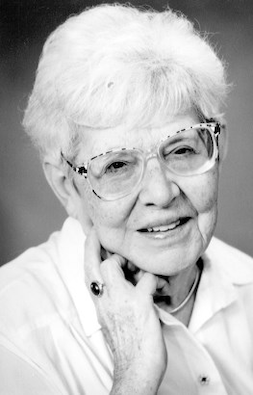
Sheila Agnes Egoff was a Canadian librarian, literary critic, and historian who was Canada's first professor of children's literature. A recipient of the Order of Canada, she was known for her studies of children's fiction including The Republic of Childhood (1967), Thursday's Child (1981) and Worlds Within (1988). The Sheila A. Egoff Children's Literature Prize is named after her.
